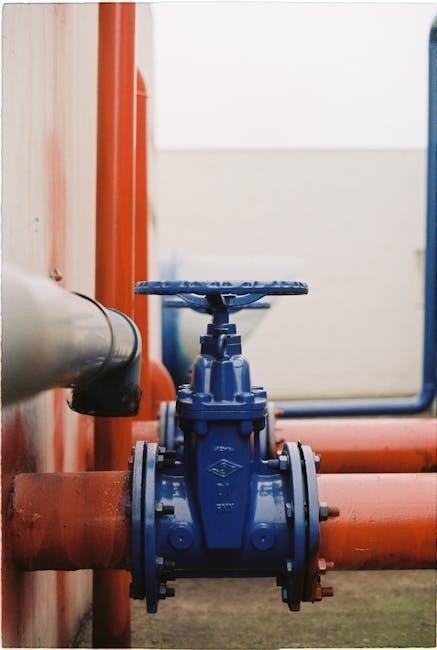guido gardens in metter ga
Guido Gardens in Metter, GA, is a renowned destination offering serene beauty and spiritual reflection. This 20-acre botanical gem features vibrant flora, a Prayer Chapel, and peaceful waterfalls, attracting visitors who seek tranquility and inspiration.
Overview of Guido Gardens
Guido Gardens in Metter, GA, is a breathtaking 20-acre botanical garden that combines natural beauty with spiritual tranquility. Known for its vibrant flora, sparkling waterfalls, and serene brooks, the gardens offer a peaceful escape for visitors. The centerpiece, the Prayer Chapel, adds a touch of inspiration, making it a perfect spot for reflection. With its well-manicured paths and diverse plant species, the gardens cater to nature lovers, photographers, and those seeking solace. Whether strolling through the grounds or attending one of the seasonal events, Guido Gardens provides a unique and unforgettable experience. Its tranquil atmosphere and stunning landscapes make it a beloved destination for both locals and travelers alike.
Location and Directions
Guido Gardens is conveniently located at 600 N. Lewis Street, Metter, GA 30495. Situated in the heart of southern Georgia, the gardens are easily accessible for both locals and travelers. Visitors traveling on Interstate 16 can take exit 104, which places them just 2 miles from the gardens. The strategic location makes it a popular stop for those exploring the region. With clear signage and ample parking, reaching Guido Gardens is straightforward. The address ensures that GPS navigation can guide visitors directly to the entrance. Whether you’re coming from nearby cities or farther away, the gardens’ accessible location makes it a must-visit destination in southern Georgia.

History of Guido Gardens
Guido Gardens was founded by the Guido family, evolving from a small, private project into a beloved community treasure. Its transformation over the years reflects dedication to beauty and tranquility.

Founding and Evolution
Guido Gardens was established by the Guido family, beginning as a modest, private garden. Over time, it expanded into a 20-acre botanical haven, blending natural beauty with spiritual elements. The addition of the Prayer Chapel marked a significant milestone, reflecting the founders’ vision to create a space for reflection and inspiration. As the gardens grew, so did their appeal, attracting visitors from across the region. The evolution of Guido Gardens has been shaped by a commitment to preserving tranquility and fostering a connection between nature and spirituality. Today, it stands as a testament to the Guido family’s dedication to creating a sanctuary for all to enjoy.
- The gardens began as a private project and gradually opened to the public.
- The Prayer Chapel was added to enhance the spiritual ambiance.
- Expansions included waterfalls, brooks, and walking paths, enriching the visitor experience.
Significance in Metter, GA
Guido Gardens holds a special place in the heart of Metter, GA, serving as a cultural and spiritual landmark. It attracts visitors from across the region, boosting local tourism and fostering community pride. The gardens’ serene atmosphere and beautiful landscapes make it a cherished destination for both locals and travelers. As a hub for events and reflection, Guido Gardens plays a vital role in the social and economic fabric of Metter, offering a peaceful escape and inspiring a sense of connection to nature and spirituality.
- A beloved landmark that enhances Metter’s charm and identity.
- Supports local tourism, contributing to the area’s economic growth.
- Provides a tranquil space for community gatherings and personal reflection.
Key Features of Guido Gardens
Guido Gardens showcases a Prayer Chapel, vibrant botanical diversity, sparkling waterfalls, and serene walking paths, offering a tranquil retreat for reflection and inspiration.

- Prayer Chapel for spiritual reflection.
- Botanical diversity with vibrant flora.
- Sparkling waterfalls and babbling brooks.
- Serenity-filled walking paths.
The Prayer Chapel
The Prayer Chapel at Guido Gardens is a serene and sacred space designed for reflection and meditation. Nestled within the gardens, it offers a peaceful retreat where visitors can connect with nature and spirituality. The chapel’s tranquil atmosphere, complemented by inspiring music, creates a perfect setting for introspection. Its elegant design blends seamlessly with the surrounding botanical beauty, making it a focal point for those seeking solace or inspiration. The Prayer Chapel is not only a spiritual hub but also a symbol of the gardens’ commitment to fostering peace and harmony. Visitors often describe it as a place where they can escape the chaos of everyday life and find inner calm. Whether for personal reflection or group prayer, the chapel remains a cherished destination within Guido Gardens.
Botanical Diversity
Guido Gardens in Metter, GA, boasts an impressive array of plant species, creating a vibrant and dynamic landscape. The gardens are home to a wide variety of flowers, shrubs, and trees, carefully curated to thrive in the local climate. Visitors can explore the ever-changing beauty of the gardens, with seasonal blooms adding color and texture throughout the year. From lush greenery to vibrant floral displays, the botanical diversity ensures there is always something new to discover. The gardens also feature waterfalls and brooks, which support a range of aquatic plants and attract wildlife. This natural oasis offers a peaceful escape, showcasing the beauty of nature and the art of horticulture. The botanical diversity of Guido Gardens makes it a must-visit destination for nature lovers and gardening enthusiasts alike.
Waterfalls and Brooks
The waterfalls and brooks at Guido Gardens in Metter, GA, are among its most captivating features, creating a serene and immersive natural experience. The gentle flow of the brooks and the soothing sound of cascading waterfalls provide a tranquil backdrop for visitors to relax and unwind. These water features are thoughtfully integrated into the garden’s design, enhancing the overall sense of peace and connection to nature. The sparkling waterfalls attract visitors year-round, offering picturesque spots for reflection and photography. The brooks, with their clear waters, add a sense of movement and life to the gardens, complementing the vibrant flora and fauna. Together, the waterfalls and brooks create a meditative atmosphere, making Guido Gardens a haven for those seeking solace and inspiration in a beautiful natural setting.
Walking Paths and Serenity
The walking paths at Guido Gardens in Metter, GA, are meticulously designed to offer a serene and immersive experience. These meandering trails wind through the gardens, inviting visitors to explore the lush surroundings at a leisurely pace. The paths are well-maintained, ensuring accessibility for all, and are lined with vibrant flora, creating a picturesque backdrop for a peaceful stroll; The tranquil atmosphere is enhanced by the soothing sounds of nature, including the gentle rustle of leaves and the soft chirping of birds. Visitors often describe the experience as a perfect escape from the hustle and bustle of daily life, offering moments of reflection and relaxation. Whether walking for exercise or simply to unwind, the paths at Guido Gardens provide a sense of calm and connection to the natural world.

Events at Guido Gardens
Guido Gardens hosts various events, including the popular Night of Lights Show, seasonal activities, and weddings. These events bring the community together, fostering joy and connection in a serene setting.
The Night of Lights Show
The Night of Lights Show at Guido Gardens was a beloved annual event, transforming the gardens into a dazzling winter wonderland. Featuring thousands of twinkling lights, festive music, and intricate displays, it became a cherished holiday tradition for many. Visitors strolled through the illuminated paths, enjoying the magical ambiance and seasonal decorations. The event brought families and friends together, creating lasting memories. However, after over 30 years, the show came to an end, leaving a bittersweet sentiment in the community. Despite its conclusion, the legacy of the Night of Lights remains a testament to the gardens’ ability to inspire joy and togetherness during the holiday season.
Seasonal Activities
Guido Gardens in Metter, GA, offers a variety of seasonal activities that cater to all ages and interests. During the spring, visitors can enjoy the vibrant blooms of flowers and participate in gardening workshops. Summer brings outdoor concerts and family-friendly events, while fall features harvest-themed activities and scenic walks amid changing foliage. The gardens also host holiday events, such as festive light displays and seasonal markets, creating a magical atmosphere for visitors. These activities not only showcase the gardens’ beauty but also foster a sense of community. Whether it’s a relaxing stroll, a educational workshop, or a festive celebration, Guido Gardens provides a unique and enriching experience for every season, making it a must-visit destination throughout the year.

Weddings and Private Events
Guido Gardens in Metter, GA, is a picturesque destination for weddings and private events, offering a serene and breathtaking backdrop. The gardens’ lush landscapes, sparkling waterfalls, and the iconic Prayer Chapel create a romantic and tranquil atmosphere, perfect for exchanging vows or celebrating special occasions. Couples can choose from various scenic spots, including the chapel or beneath a canopy of vibrant flora, to host their ceremonies and receptions. The gardens also provide ample space for private events, such as anniversaries, birthdays, or corporate gatherings. With its natural beauty and inspiring ambiance, Guido Gardens has become a sought-after venue for those seeking a unique and memorable experience. The staff offers support for event planning, ensuring every detail is tailored to create unforgettable moments.
Visitor Information
Guido Gardens is located at 600 N. Lewis Street, Metter, GA. Visitors can explore the gardens during operating hours, with tickets available for admission to this serene destination.
Hours of Operation
Guido Gardens in Metter, GA, is open to visitors from 8:00 AM to 6:00 PM daily. The gardens offer a peaceful retreat, with extended hours during seasonal events like the Night of Lights Show. Visitors are encouraged to plan their visits during these times to fully experience the serene atmosphere and beautiful landscapes. The gardens are closed on select holidays, so it’s advisable to check the official schedule before planning a visit. The flexible hours cater to both early risers and those who prefer a late afternoon stroll, ensuring everyone can enjoy the tranquility of the gardens. Seasonal variations may apply, especially around holidays, so visitors should confirm hours beforehand to avoid disappointment.
Ticketing and Admission
Guido Gardens in Metter, GA, offers a straightforward ticketing process to ensure a smooth visit. General admission is priced at $12 for adults, $10 for seniors (65+), and $6 for children aged 6-12. Children under 6 enter free of charge. Special event tickets, such as the Night of Lights Show, may vary in price, typically ranging from $15 to $20 per person. Tickets can be purchased online in advance or at the gate upon arrival. Discounts are available for military personnel, students, and groups of 10 or more with prior reservations. Annual passes are also available for frequent visitors, offering unlimited access for a year. It’s recommended to buy tickets online during peak seasons to avoid wait times. The gardens strive to make their serene environment accessible to all while maintaining affordable pricing for families and individuals alike.

Plan Your Visit

Planning a visit to Guido Gardens in Metter, GA, ensures a memorable experience. Located at 600 N. Lewis Street, the gardens are easily accessible from Interstate 16, exit 104. Visitors are encouraged to arrive early to maximize their time exploring the 20-acre property. Comfortable walking shoes are recommended, as the gardens feature extensive paths winding through lush landscapes. Bring water and sunscreen for a day outdoors, and check the weather forecast to plan accordingly. Allow at least 2-3 hours to fully enjoy the Prayer Chapel, waterfalls, and botanical diversity. Peak seasons, such as spring and fall, offer stunning views, while the Night of Lights Show attracts crowds during the holiday season. Plan your visit around these events or opt for a quieter experience during weekdays. With its serene atmosphere, Guido Gardens is a perfect destination for relaxation and inspiration.
Tips for Visitors

Visiting Guido Gardens in Metter, GA, is a delightful experience, and with a few tips, you can make the most of your trip. Wear comfortable walking shoes, as the gardens span 20 acres with winding paths. Bring water and sunscreen, as you’ll likely spend time outdoors. Check the weather forecast to plan your attire. Arrive early to avoid crowds, especially during peak seasons like spring and fall. Respect the gardens by not picking flowers or littering. Be mindful of personal belongings, as occasional vandalism has been reported. Allow time to explore the Prayer Chapel and enjoy the serene waterfalls. Avoid visiting during heavy rain, as paths may become slippery. Bring a camera to capture the stunning botanical diversity. Lastly, plan for at least 2-3 hours to fully experience the gardens’ beauty and tranquility. These tips ensure a memorable and enjoyable visit to Guido Gardens.

Community Involvement
Guido Gardens in Metter, GA, is a beloved landmark that supports local initiatives and fosters community spirit through its serene environment and cultural events, enriching the local area.
Local Impact
Guido Gardens has become a cornerstone of Metter, GA, fostering community spirit and providing a peaceful retreat for residents and visitors alike. Its serene environment and cultural events have made it a hub for local gatherings, promoting unity and pride among the community. The gardens also contribute to the local economy by attracting tourists, who often support nearby businesses. Additionally, Guido Gardens has been involved in charitable initiatives, further enhancing its role as a positive force in the area. By offering a space for reflection and connection, it has become an integral part of Metter’s identity, ensuring its legacy as a place of beauty and community enrichment.
Charitable Initiatives
Guido Gardens has long been committed to giving back to the community. Through various charitable initiatives, the gardens have supported local causes, fostering a spirit of generosity and compassion. A portion of the proceeds from events like the Night of Lights Show has been donated to local charities, helping those in need. Additionally, the gardens have hosted fundraising events for community projects, such as park improvements and educational programs. The Prayer Chapel has also served as a venue for community support gatherings, offering a peaceful space for reflection and unity. By prioritizing charitable efforts, Guido Gardens has strengthened its bond with the people of Metter, GA, becoming more than just a botanical destination but a beacon of hope and kindness in the region.
Challenges and Controversies
Guido Gardens has faced challenges, including vandalism incidents and the conclusion of the Night of Lights Show, affecting its role in the Metter, GA community.
Vandalism Incidents
Guido Gardens in Metter, GA, has faced unfortunate vandalism incidents, particularly during peak visitation seasons. These acts of vandalism, including theft and property damage, have occurred despite the gardens’ peaceful ambiance. The most notable incident happened during the Christmas season, targeting the Night of Lights Show, a beloved community event. This not only caused financial loss but also disheartened visitors and staff. The vandalism highlighted the challenges of maintaining a public space and the need for increased security measures. Despite these setbacks, the gardens remain a cherished destination, showcasing resilience and community support. The incidents serve as a reminder of the importance of preserving such serene and culturally significant spaces for future generations.
End of the Night of Lights Show
The Night of Lights Show at Guido Gardens in Metter, GA, a cherished annual event, has come to an end after over 30 years. This decision, while bittersweet for the community, was made by the organizers behind the scenes. The show, known for its dazzling light displays and festive atmosphere, had become a holiday tradition for many. Its conclusion marks the end of an era, leaving visitors with fond memories. The gardens will continue to offer other attractions, but the Night of Lights will be deeply missed. This change underscores the evolving nature of community events and the challenges of sustaining long-running traditions. The legacy of the show remains a testament to its impact on the region’s cultural landscape.
Legacy of Guido Gardens
Guido Gardens stands as a cultural treasure in Metter, GA, inspiring visitors with its serene beauty and spiritual ambiance. Its enduring legacy continues to captivate hearts and minds, fostering a deep connection to nature and community, ensuring its impact for generations to come.
Cultural Significance
Guido Gardens holds a profound cultural significance in Metter, GA, serving as a symbol of tranquility and spiritual renewal. The gardens have become a cherished landmark, blending natural beauty with inspirational spaces like the Prayer Chapel. They foster a sense of community, offering a serene escape for reflection and connection. The botanical diversity and artistic design attract visitors from across the region, making it a hub for cultural enrichment. Over the years, the gardens have inspired countless individuals, creating lasting memories and a shared appreciation for nature’s beauty. This cultural treasure continues to be a source of pride and inspiration, embodying the values of harmony and spirituality that resonate deeply with the local community and beyond.
Future Prospects
Guido Gardens in Metter, GA, is poised for a bright future, with plans to expand its offerings while preserving its serene charm. The gardens aim to enhance visitor experiences through new attractions and improved facilities. Sustainability initiatives are being explored to maintain the ecological balance of the botanical haven. Community engagement will remain a priority, with plans for educational programs and cultural events. The gardens also hope to introduce new themed sections and interactive exhibits to attract a wider audience. Despite the conclusion of the Night of Lights Show, the venue is committed to innovating and adapting to ensure its legacy endures. By blending tradition with modern ideas, Guido Gardens continues to be a beacon of beauty and inspiration for future generations, solidifying its role as a cultural and spiritual hub in the region.
Guido Gardens stands as a timeless haven, blending natural beauty with spiritual solace, leaving a lasting impression on all who visit this cherished destination in Metter, GA.
Final Thoughts
Guido Gardens in Metter, GA, is a place where nature and spirituality converge, offering visitors a serene escape from the world. Its 20-acre landscape, adorned with vibrant flora, sparkling waterfalls, and a peaceful Prayer Chapel, creates an atmosphere of tranquility and reflection. While challenges like vandalism and the end of the Night of Lights Show have impacted the gardens, their beauty and significance remain undiminished. The gardens continue to be a cherished destination, attracting those seeking solace, inspiration, and connection with nature. As a cultural and spiritual landmark, Guido Gardens leaves a lasting impression on all who visit, ensuring its legacy as a haven of peace and beauty for generations to come.
Call to Action
Discover the serene beauty of Guido Gardens in Metter, GA, and experience a haven of peace and inspiration. Plan your visit today and explore the stunning botanical diversity, tranquil waterfalls, and the iconic Prayer Chapel. Whether you’re seeking solace, nature, or a unique event venue, the gardens offer something for everyone. Don’t forget your camera to capture the breathtaking views! Consider supporting this beloved landmark by attending events like the Night of Lights Show or participating in seasonal activities. Bring your family and friends to enjoy the walking paths and serene atmosphere. Help preserve this gem for future generations by respecting the grounds and supporting its charitable initiatives. Visit Guido Gardens and let its beauty inspire you. Plan your trip now and create lasting memories in this peaceful retreat!






































































